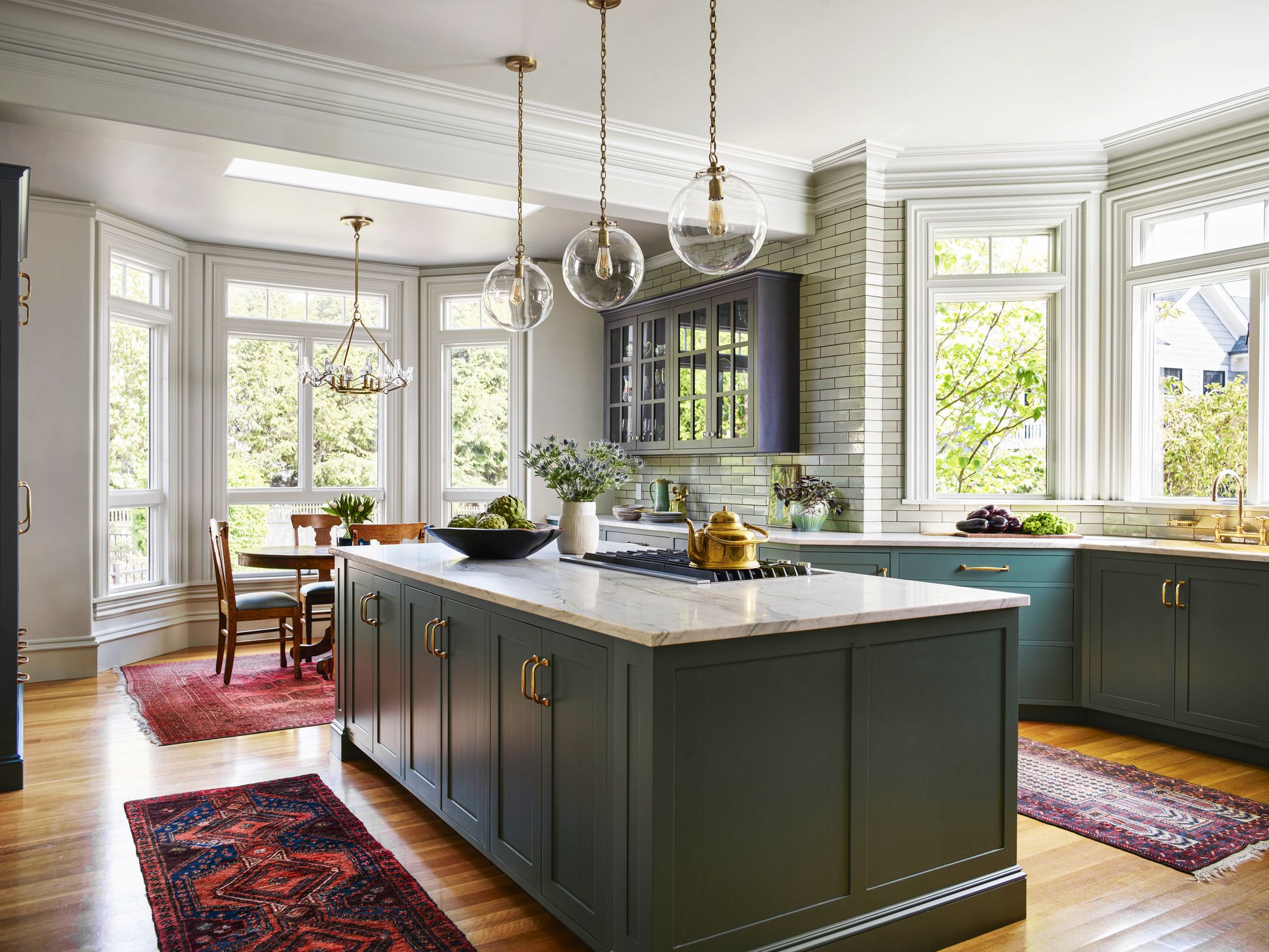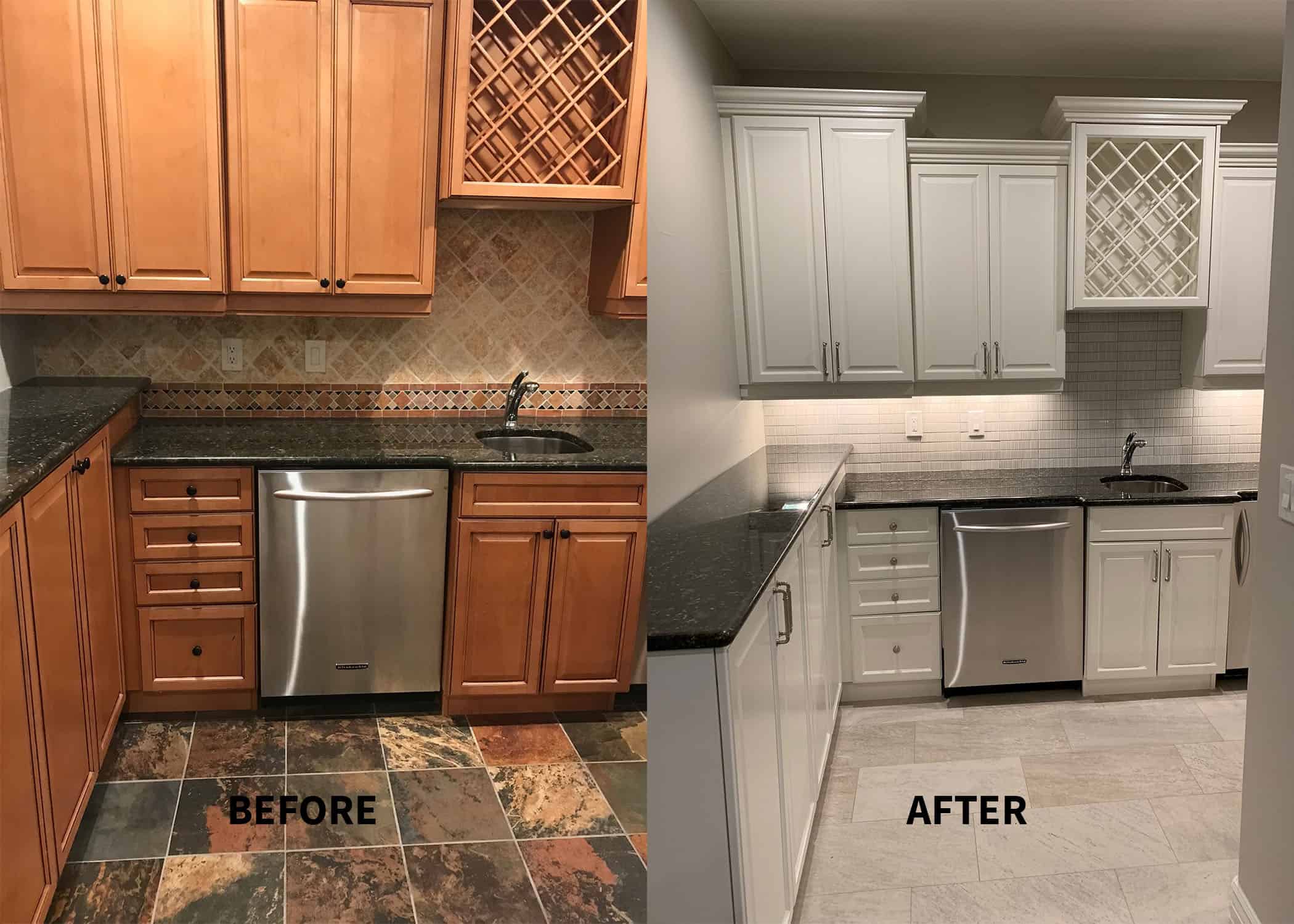Cost Comparison of Painting vs. Replacing Already Painted Cabinets

Revitalizing your kitchen? The decision between repainting your existing cabinets and replacing them entirely is a significant one, heavily influenced by budget and desired outcome. Let’s delve into a detailed cost comparison to help you make the best choice for your home.
Cost Breakdown: Repainting vs. Replacing
This comparison highlights the financial implications of each option, considering labor, materials, and disposal. Remember that these are estimates, and actual costs may vary based on location, cabinet type, and the extent of the project.
| Item | Repainting (Per Cabinet) | Repainting (Total) | Replacement (Per Cabinet) | Replacement (Total) |
|---|---|---|---|---|
| Labor | $25 – $50 | (Labor cost per cabinet * Number of cabinets) | $100 – $200 | (Labor cost per cabinet * Number of cabinets) |
| Materials (Primer, Paint, etc.) | $10 – $20 | (Material cost per cabinet * Number of cabinets) | N/A | N/A |
| Disposal Fees (Old Cabinets) | $0 – $10 (if applicable) | (Disposal cost per cabinet * Number of cabinets) | $20 – $50 (per cabinet) | (Disposal cost per cabinet * Number of cabinets) |
| Total Cost | $35 – $80 | (Sum of all repainting costs) | $120 – $250 | (Sum of all replacement costs) |
Note: These figures are illustrative. Actual costs will depend on factors such as the number of cabinets, their size, and the complexity of the project. Professional quotes are always recommended.
Hypothetical Scenarios: Cost Variations
To illustrate how cost varies, let’s consider several scenarios. Understanding these variations is crucial for accurate budgeting.
Painting already painted cabinets – Below are examples showcasing the cost differences based on cabinet type and condition:
- Scenario 1: 10 Wood Cabinets, Minor Scratches: Repainting is significantly more cost-effective. The existing wood provides a solid base, minimizing preparation time and material costs. Replacement would be a substantial unnecessary expense.
- Scenario 2: 15 Laminate Cabinets, Significant Damage: Repainting might not be feasible due to the extensive damage. The cost of repairing the laminate before painting could outweigh the cost of replacement. Replacing the cabinets would be a more practical and long-term solution in this case.
- Scenario 3: 20 Wood Cabinets, Extensive Water Damage: In cases of severe water damage, repairing and repainting might be too costly and time-consuming. Replacing the damaged cabinets is likely the most practical option, ensuring structural integrity and longevity.
Long-Term Cost Implications
The initial cost isn’t the only factor; long-term maintenance and durability also play a vital role.
Factors influencing long-term costs include:
- Paint Quality: High-quality paint offers superior durability and longevity, reducing the need for frequent repainting. A cheaper option might require repainting sooner, negating any initial cost savings.
- Cabinet Material: Wood cabinets, while more expensive initially, generally offer greater durability and longevity than laminate, potentially reducing long-term replacement costs.
- Maintenance: Regular cleaning and minor touch-ups can extend the life of painted cabinets, minimizing the need for extensive repainting or replacement.
Techniques for Repainting Already Painted Cabinets

Repainting your kitchen cabinets can dramatically transform the look of your entire space, breathing new life into your home without the hefty price tag of replacement. This process, while requiring some elbow grease, is achievable for even moderately handy individuals, resulting in a stunning and personalized finish. Let’s delve into the techniques that will ensure a professional-looking result.
Cabinet Preparation for Repainting
Proper preparation is paramount for a successful repaint. Skipping this crucial step will almost certainly lead to a less-than-ideal finish, with paint chipping and peeling in short order. Taking the time to meticulously prepare your cabinets will pay off handsomely in the long run. The following steps will guide you through the process:
- Thorough Cleaning: Begin by thoroughly cleaning your cabinets to remove grease, grime, and any loose paint particles. Use a degreasing cleaner and a soft cloth or sponge, paying attention to handles, knobs, and crevices. Rinse with clean water and allow to dry completely.
- Light Sanding: Once dry, lightly sand the existing paint with fine-grit sandpaper (220-grit or higher). This step creates a slightly rough surface, improving paint adhesion. Focus on any imperfections or areas with peeling paint. Don’t over-sand; you’re aiming for a slightly textured surface, not bare wood.
- Imperfection Repair: Use wood filler to repair any significant chips, cracks, or gouges. Allow the filler to dry completely according to the manufacturer’s instructions, then sand smooth with fine-grit sandpaper.
- Priming (If Necessary): If you’re changing the color drastically (e.g., from dark to light), or if the existing paint is glossy, a primer is essential. It ensures proper adhesion and prevents the new paint from bleeding through. Choose a high-quality primer designed for cabinets.
Paint Type Selection for Cabinets
Choosing the right paint is crucial for durability and longevity. Different paints offer varying advantages and disadvantages, influencing the final look and ease of application. Consider the following:
| Paint Type | Durability | Drying Time | Ease of Application | Advantages | Disadvantages |
|---|---|---|---|---|---|
| Latex | Good | Relatively fast (1-2 hours) | Easy; water cleanup | Low odor, easy cleanup, durable enough for most cabinet applications. | May require multiple coats for full coverage, especially on darker colors. |
| Oil-Based | Excellent | Slow (several hours to dry completely) | More challenging; requires mineral spirits cleanup | Very durable, excellent for high-traffic areas, creates a hard, smooth finish. | Strong odor, longer drying time, requires solvents for cleanup. |
| Enamel | Excellent | Moderate (2-4 hours) | Moderate; can be applied with brush or sprayer | Very durable, smooth, glossy finish, resists scratches and stains. | Can be more expensive than latex, requires careful application to avoid brush strokes. |
Achieving a Smooth, Professional Finish, Painting already painted cabinets
The key to a flawless finish lies in proper application techniques. These techniques minimize brush strokes and drips, creating a smooth, even coat.
- Use High-Quality Brushes or Rollers: Invest in good quality brushes or rollers designed for painting cabinets. A high-quality brush will leave a smoother finish than a cheap one. Consider using a small brush for detailed areas and a roller for larger surfaces.
- Apply Thin Coats: Apply multiple thin coats rather than one thick coat. This allows each layer to dry properly, preventing drips and runs. Let each coat dry completely before applying the next.
- Use a “W” or “V” Technique: When using a brush, use a “W” or “V” pattern to blend the paint smoothly, minimizing brush strokes. Overlap strokes slightly to avoid streaks. For rollers, use smooth, even strokes, overlapping each pass slightly.
- Maintain a Wet Edge: Keep a “wet edge” as you work, meaning you always overlap the previously painted area while the paint is still wet. This prevents visible lap marks.
- Clean Up Immediately: Clean your brushes and rollers immediately after use with soap and water (for latex) or mineral spirits (for oil-based). This prevents the paint from hardening and ruining your brushes.
Transforming the Look of Already Painted Cabinets: Painting Already Painted Cabinets
Giving your kitchen a fresh, updated look doesn’t always require the drastic step of completely repainting your cabinets. With a little creativity and some clever techniques, you can achieve a stunning transformation without the mess and expense of a full repaint. Let’s explore some exciting ways to revitalize your existing painted cabinets and breathe new life into your kitchen.
Creative Updates Without Repainting
Updating your cabinets without repainting offers a cost-effective and less time-consuming alternative to a full-scale renovation. Several techniques allow you to significantly change the appearance of your cabinets, adding personality and style to your kitchen.
Imagine a kitchen with creamy white cabinets, their simple lines subtly enhanced. Instead of a complete repaint, sleek, brushed nickel hardware replaces the old, tarnished knobs and pulls. The change is dramatic; the nickel’s cool tones contrast beautifully with the warm white, adding a modern touch without altering the base color. This simple upgrade elevates the entire look. For a bolder statement, consider oil-rubbed bronze hardware for a richer, more traditional feel. The shift in hardware alone creates a noticeably different aesthetic.
Stenciling offers another avenue for customization. Picture a set of light gray cabinets adorned with a delicate floral stencil in a soft, muted teal. The stenciling adds a touch of elegance and artistry, transforming the cabinets from plain to sophisticated. The choice of a subtle pattern keeps the look refined, while the color palette complements the existing gray, creating a harmonious and visually appealing space. Using metallic paints for stenciling adds a further layer of texture and sophistication.
Decoupage provides a fun and unique way to personalize your cabinets. Imagine vibrant butterflies, meticulously cut from vintage maps and carefully adhered to the cabinet doors. The mix of textures – the smooth cabinet surface against the slightly rough paper – creates visual interest. The color palette could be anything from earthy tones to bright, bold hues, depending on the chosen images. This technique injects personality and adds a unique vintage flair, creating a conversation piece in your kitchen.
Kitchen Design Concept: Coastal Calm
This design concept utilizes already painted cabinets as a foundation for a serene and inviting coastal-inspired kitchen. Imagine soft, seafoam green cabinets – a color that evokes the calming effect of the ocean. These cabinets serve as the backdrop for a kitchen design that emphasizes natural light and airy textures.
The countertops would be a light-colored quartz, mimicking the look of natural stone. Its subtle veining adds visual interest without overwhelming the space. The backsplash would be a mosaic of small, glossy white tiles, interspersed with occasional sea-glass-colored accents. The backsplash reflects light, enhancing the airy feel of the kitchen. The overall aesthetic is one of relaxed sophistication – a space that feels both inviting and stylish. The choice of seafoam green for the cabinets is deliberate; it provides a neutral base while subtly introducing the coastal theme. The light quartz countertops and white mosaic backsplash reinforce the feeling of openness and brightness. The combination creates a space that feels both calming and energized.
